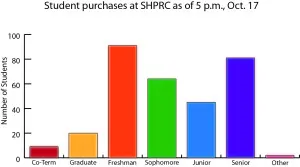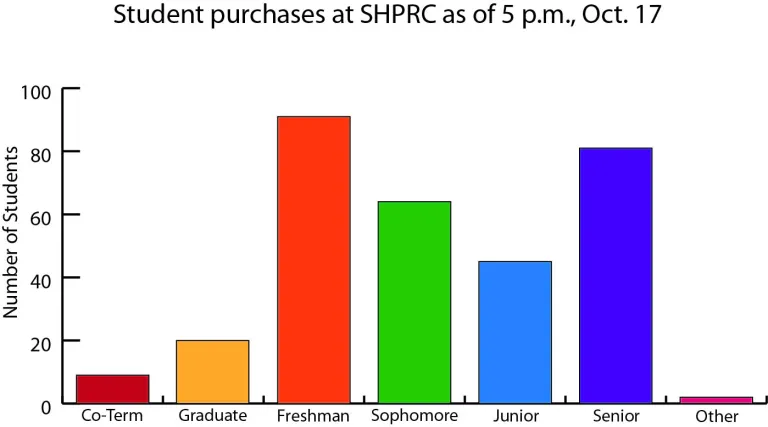After revising its budget this year, the Sexual Health Peer Resource Center (SHPRC) is increasing the credit that every undergraduate and coterminal student receives from two dollars to three. Additionally, the price of condoms has decreased from six for a dollar to ten for a dollar, and all eligible students can now get thirty fully-subsidized condoms per quarter.

The credit can be used towards any item in the center, including condoms, lube, dental dams, pregnancy tests, sex toys and other products.
Condoms are by far the SHPRC’s most popular product, with 5,918 already having been distributed this quarter. These changes mark the first time condom pricing has been altered in at least a decade, and they signal the end of the “12 free” slogan that has long been a catchphrase for people looking for condoms at the SHPRC.
“‘12 free’ was very much just a part of the Stanford culture,” said Sophi Newman ’13, SHPRC co-director and financial officer. “Now, instead of your 12 free it’s your 30 free… It’s more bang and more buck.”
Starting this year, students can also use their credit for one free pregnancy test per quarter and purchase subsequent tests for $4.25.
“In the past it’s been about $4 for [pregnancy tests],” said Laura Bomes ’13, SHPRC co-director. “The reason we’re doing that first pregnancy test free… is that we’ve had a lot of students muster up their courage and come in [but] not realize we’re a cash-only operation.”
Additionally, all Peer Health Educators (PHEs) will be given 50 condoms per quarter to hand out to residents in their dorms and at sexual health outreach events. In the past, PHEs have had to use dorm funds for condom purchases.
“Last year, we got more requests from PHEs [who] would like to be able to use SHPRC condoms because they’re so much cheaper,” Newman said. “So what we’re doing this year is having a dedicated stock of condoms that’s separate from the ones we give away ourselves… that’s just for giving away at outreaches or to dorms.”
In order to find the funds to hand out more merchandise, Newman went through the SHPRC’s budget and realized that, in years past, the budget had not been fully spent by the end of the year.
“If everyone is going to give us money and we’re a public health organization, the most responsible thing we can do is spend through all that money,” Newman said. “If we make a concerted effort to, at the end of the year, have no money left, that means we will have bought and given away the most merchandise possible.”
Graduate students can come to the SHPRC and buy merchandise at the center’s reduced rate, but do not have the same credit as undergraduates and coterms because the SHPRC did not apply for graduate student special fees last year. They have applied in past years and been rejected.
On the other hand, undergraduates usually pass the SHPRC’s special-fee request by huge margins: Last year, over 86 percent of voting students supported their fee request.
